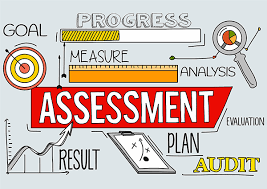Introduction
Assessment is a critical component of the educational process, aiming to evaluate students’ knowledge, skills, and abilities in various subjects. Through assessment, teachers and instructors can determine the effectiveness of their teaching methods and identify areas that require improvement. This article provides an overview of the concept of assessment, discussing its importance and highlighting different methods employed in education.
The Importance of Assessment
Effective assessment serves various purposes:
1. Measuring Progress: Assessments allow both teachers and students to monitor academic progress over time. By periodically examining student performance, educators can identify strengths and weaknesses, helping to inform their instructional strategies.
2. Guiding Instruction: Assessment data helps instructors tailor their teaching strategies to meet the needs of individual students. This ensures that each learner receives support designed to promote growth in their learning journey.
3. Providing Feedback: Timely feedback is essential for student development, as it enables them to understand their strengths and areas requiring improvement. Through assessments, students can set specific goals for improvement and develop suitable strategies to meet those objectives.
4. Accountability: Assessments demonstrate accountability on the part of both teachers and students. They help maintain high standards within educational institutions by ensuring that all parties involved are committed to achieving optimal educational outcomes.
Assessment Methods
Various methods of assessment are employed in educational settings to assess diverse learning outcomes:
1. Formative Assessment: This type of assessment occurs throughout the learning process, providing continuous feedback for both teachers and students. It includes classroom discussions, quizzes, reflection exercises, and other approaches that facilitate in-the-moment adjustment of teaching strategies based on student needs.
2. Summative Assessment: Summative assessments evaluate a student’s overall performance at the end of a course or unit of study. They are often high-stakes examinations, such as final exams or standardized tests, which provide a comprehensive measure of a learner’s mastery of a subject area.
3. Diagnostic Assessment: Administered at the beginning of a course or unit, diagnostic assessments identify students’ prior knowledge and skills. Educators can use these results to design instruction plans that address individual needs and support differentiated learning experiences.
4. Peer Assessment: This method involves students evaluating their classmates’ work to provide feedback and encouragement. It promotes collaboration, critical thinking, and self-awareness among learners.
5. Self-Assessment: Encouraging students to evaluate their own work empowers them to take greater ownership of their learning process. Self-assessment fosters self-regulation, goal setting, and metacognitive skills that are essential for success in higher education and beyond.
Conclusion
Assessment is an indispensable part of education, playing a crucial role in monitoring progress, guiding instruction, providing feedback, and ensuring accountability among both students and teachers. By employing a variety of assessment methods that cater to different learning styles and objectives, educators can create an inclusive and supportive environment that facilitates academic growth and personal development for all students.





